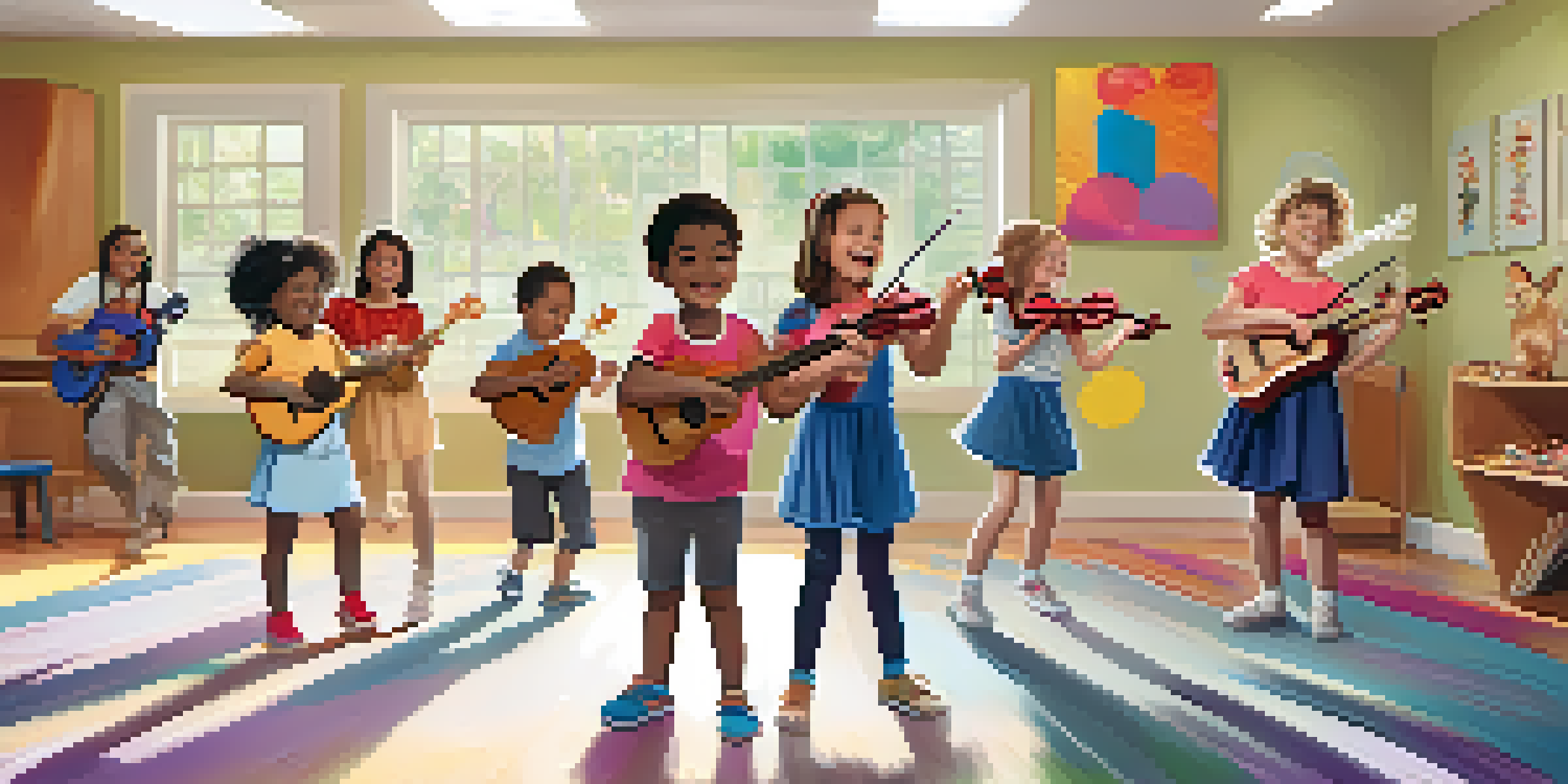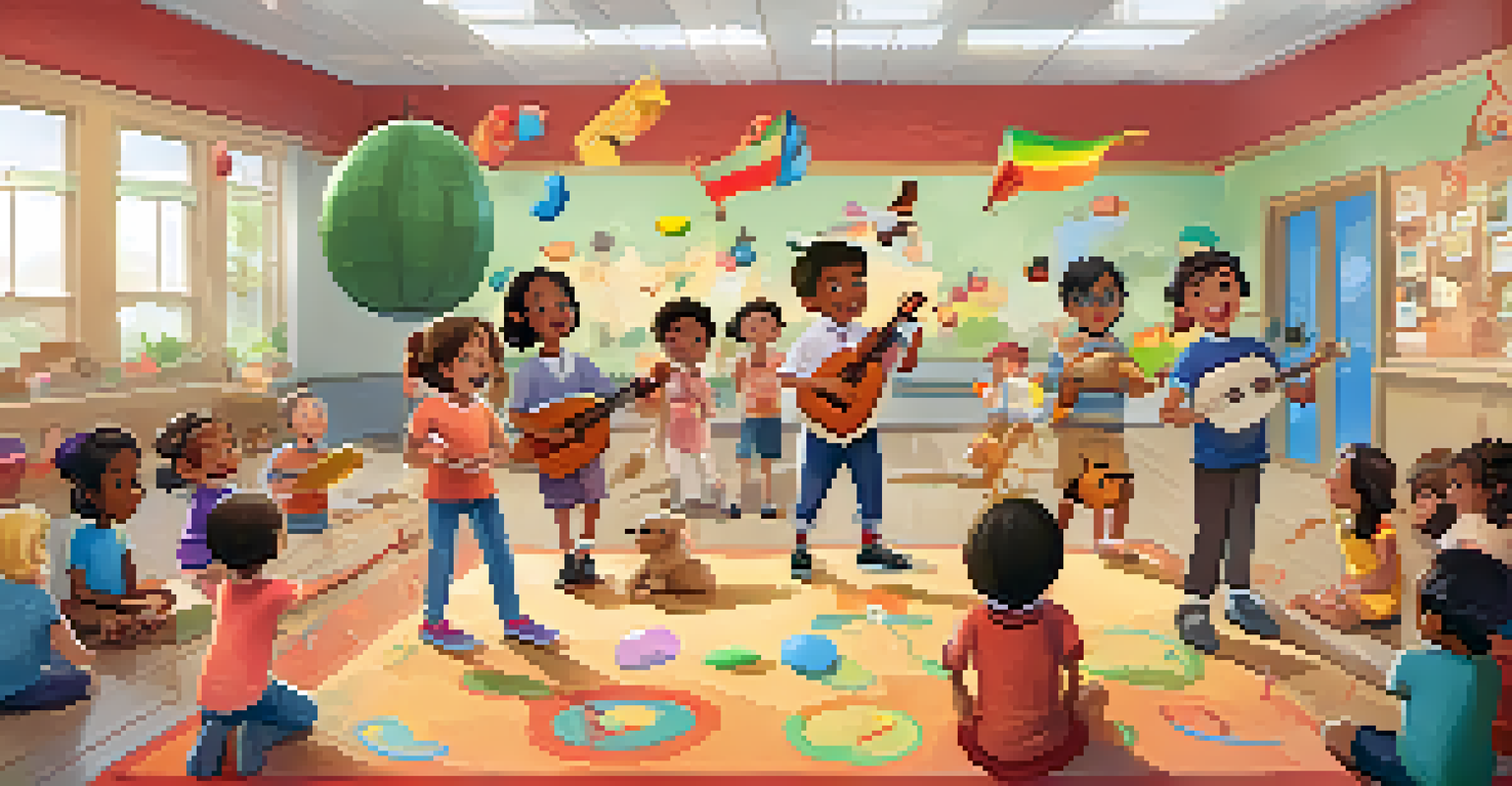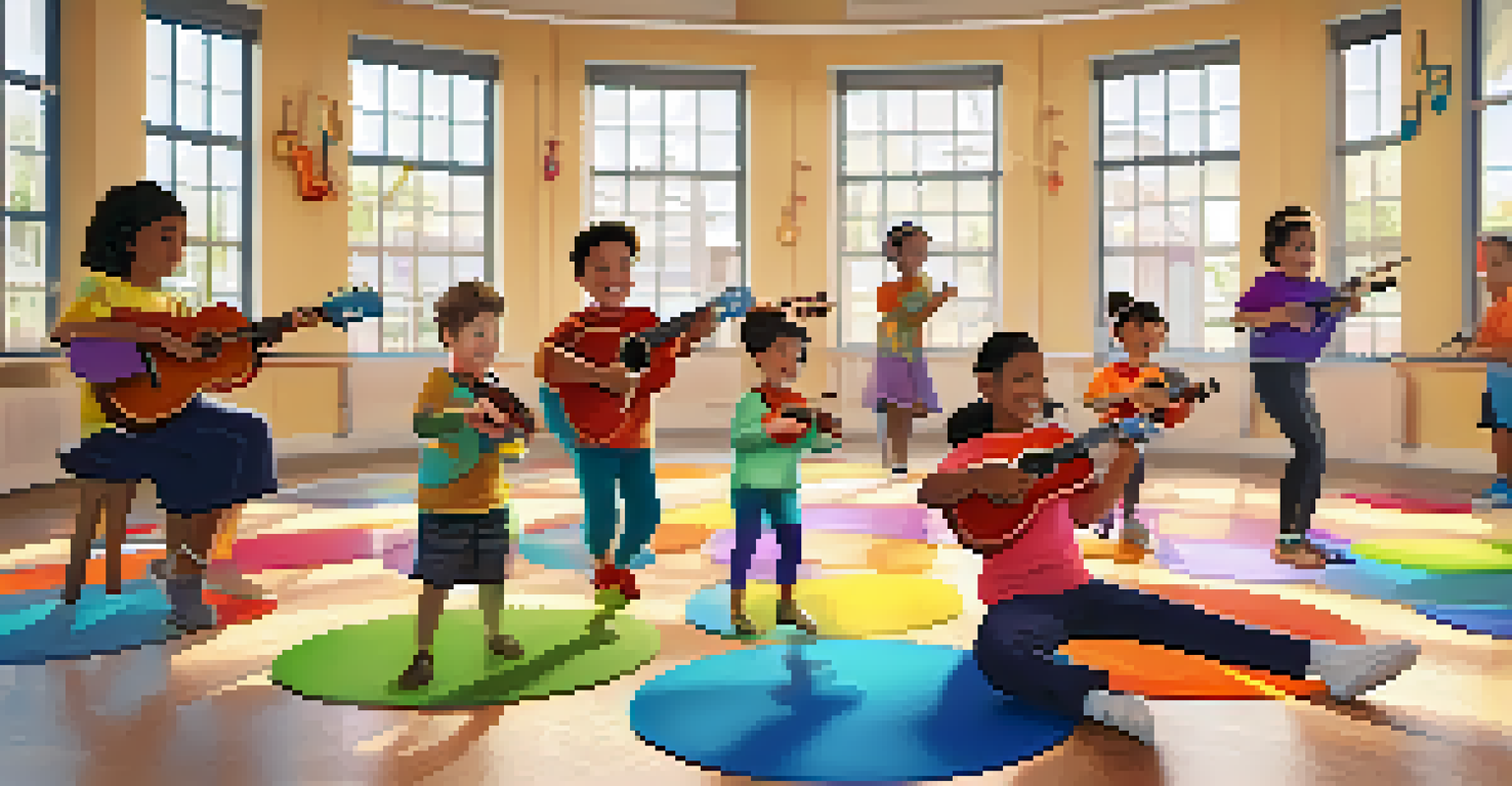Incorporating Movement in Ukulele Lessons for Kids

Why Movement Matters in Music Education
Incorporating movement into music lessons, especially for kids, can enhance their learning experience. Movement helps children connect physically with the music, making it more memorable and enjoyable. It taps into their natural energy and enthusiasm, transforming a simple lesson into an engaging activity.
Movement is a medicine for creating change in a person's physical, emotional, and mental states.
When kids move while they learn, they use multiple senses, which can boost their retention of musical concepts. For instance, clapping hands to a rhythm can help them grasp timing and beats more effectively. This kinesthetic approach supports various learning styles, making the ukulele accessible to all children.
Moreover, movement promotes physical coordination and body awareness, essential skills for young learners. By incorporating simple actions, like swaying or stepping to the beat, children not only develop musicality but also improve their overall motor skills. This dual benefit makes movement an invaluable addition to any ukulele lesson.
Integrating Basic Dance Steps with Ukulele Playing
One fun way to incorporate movement is by introducing basic dance steps that align with the music. Simple steps like side shuffles or hops can be paired with strumming patterns, creating a lively atmosphere. This not only makes the lesson more interactive but also allows children to express themselves physically through music.

For example, you could teach a simple two-step dance that matches the rhythm of a song they are learning. As they practice the dance, they can strum their ukuleles, reinforcing the connection between movement and music. This approach keeps their hearts pumping while they develop a sense of timing and rhythm.
Movement Boosts Music Learning
Incorporating movement into music lessons enhances children's engagement and retention of musical concepts.
Additionally, dance moves can be tailored to fit different songs, allowing for creativity and personalization. Kids can even come up with their own movements, encouraging self-expression and ownership of their learning. This autonomy makes the ukulele lesson feel less like a chore and more like a fun activity.
Using Rhythm Games to Encourage Movement
Rhythm games are a fantastic way to mix music and movement in ukulele lessons. Simple activities like 'Rhythm Freeze' can encourage kids to play their instruments while moving around. When the music stops, they must freeze in place, blending physical activity with musical practice.
Music is the movement of sound to reach the soul for the education of its virtue.
These games can also involve clapping or stomping to the beat, which reinforces the concepts of rhythm and timing. For instance, you could have the kids clap their hands while strumming their ukuleles, helping them feel the music in their bodies. This combination of actions engages their minds and bodies simultaneously.
Not only do these games make learning more enjoyable, but they also build community and teamwork among students. Kids will laugh and cheer each other on, creating a positive learning environment. The shared experience of movement and music can deepen their connections, both to the instrument and to each other.
Incorporating Props for Enhanced Engagement
Props can add an exciting dynamic to ukulele lessons, encouraging kids to move more freely. Simple items like scarves or ribbons can be used to visualize rhythms as they sway and dance. As children wave their props along with their strumming, they’re likely to feel more connected to the music.
You can also use colorful balls or bean bags that kids can toss or pass while playing. This activity not only adds a fun challenge but also reinforces timing and coordination. For example, passing a ball in time with the music helps them sync their movements with the beat.
Dance Steps Enhance Ukulele Fun
Integrating simple dance steps with ukulele playing encourages physical expression and reinforces timing.
Incorporating props fosters creativity, allowing children to express themselves in unique ways. It can also spark their imagination, as they might create stories or scenarios around the props they use. This imaginative play enhances their musical journey, making learning the ukulele even more captivating.
Creating a Movement-Based Warm-Up Routine
A warm-up routine that includes movement can set the tone for an engaging ukulele lesson. Consider starting with simple stretches that involve reaching and swaying, awakening their bodies and minds. This not only prepares them for playing but also helps them focus on the lesson ahead.
You might also include vocal warm-ups combined with movement, like singing a scale while moving side to side. This approach promotes breath control and encourages kids to feel the music physically. Such routines can become a fun ritual that students look forward to at the beginning of each lesson.
Overall, a movement-based warm-up can create a sense of community and excitement among students. As they engage in these shared activities, they build camaraderie and a positive atmosphere. This sense of belonging can enhance their overall learning experience and motivation to practice.
Incorporating Storytelling with Movement
Storytelling can be a powerful tool in ukulele lessons, especially when combined with movement. You can choose songs that tell a story and encourage kids to act out the narrative as they play. This adds a layer of creativity and helps them connect with the music on a deeper level.
For example, if a song mentions animals, children can mimic the movements of those animals while singing along. This not only makes the lesson more interactive but also sparks their imagination. They’ll be more likely to remember the song if they can visualize and embody its story.
Free Movement Fosters Creativity
Allowing kids to explore music through free movement cultivates individuality and a deeper connection to their musical journey.
Using storytelling in this way fosters a love for music and encourages kids to think creatively. It allows them to explore emotions and themes while having fun with their ukuleles. This approach also highlights the connection between music and storytelling, enriching their understanding of both.
Encouraging Free Movement in Music Exploration
Finally, allowing kids to explore music through free movement can be incredibly beneficial. After learning a song, give them space to experiment with their own movements while they play. This freedom encourages individuality and helps them find their unique musical expression.
Kids might dance, jump, or sway as they feel the rhythm, allowing their bodies to react naturally to the music. This organic movement can lead to newfound creativity and a sense of ownership over their musical journey. They’ll feel more confident in their abilities and willing to explore different styles.

Additionally, this exploration can serve as a powerful bonding experience among peers. As they share their movements and ideas, kids will build friendships and a supportive community. Ultimately, encouraging free movement in music exploration can transform ukulele lessons into a joyful and memorable experience.